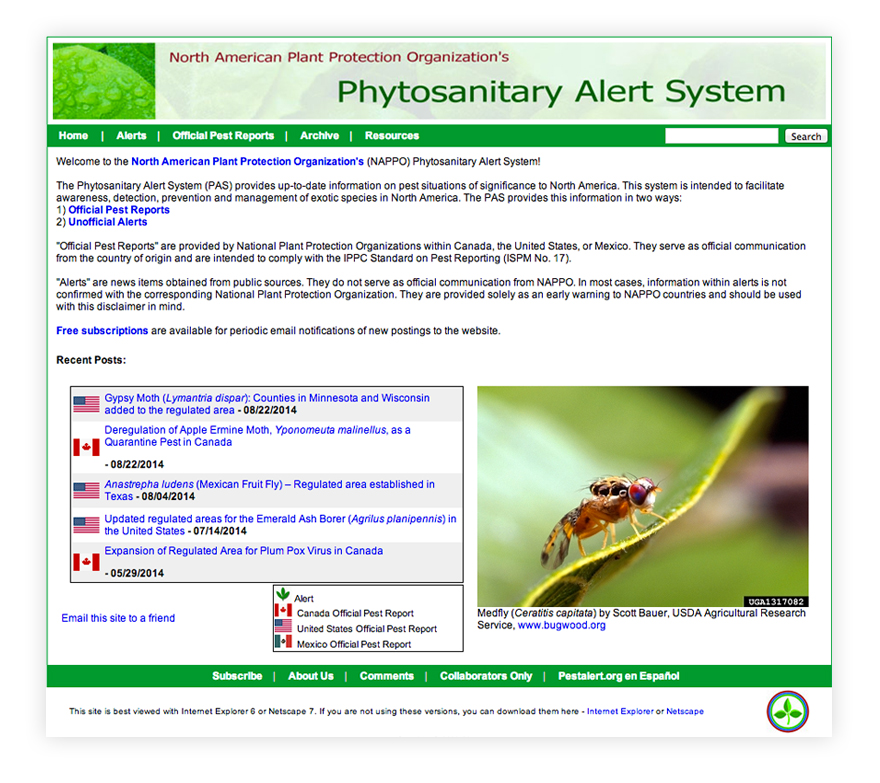Lesson 1: Introduction to Pest Surveillance
Topic 1: Introduction to Pest Surveillance
This topic provides a brief overview of the concept of using pest surveillance to protect national agricultural interests.
Objective:
- Understand that pest monitoring records are important for protecting agricultural production
This module begins with a fictional scenario to illustrate the principles of pest surveillance. Click on the interactive box below.
The fire moth has not yet been detected in your country of Importland, but barumba berries are an economically important crop. After performing a pest risk analysis (PRA), Importland has determined that the fire moth is a major concern and has identified it as an official quarantine pest. The National Plant Protection Organization (NPPO) will develop a pest risk management plan and take actions to mitigate the entry and establishment of the fire moth.
As a review of previous modules, answer the following question about quarantined pests.
There are several actions you can take to protect Importland from the introduction and spread of the fire moth. These actions are then maintained throughout the safeguarding continuum. The safeguarding continuum is a system of activities that uses international information about pests to aid in the detection and response to pests that could enter a country. These activities (or phytosanitary measures) may lead to improved recovery or even prevent the establishment of new pests.

The best way to protect agricultural production is to prevent the introduction of pests, but this is not always possible. If prevention fails, the NPPO must be prepared with a plan for responding to and recovering from pest introduction. There are many methods for gathering information that will help achieve this goal. You will learn more details about the safeguarding continuum in a future module. In this module, you will learn about pest surveillance as a method for obtaining critical information to help you meet the goals of the safeguarding continuum.
Watch the following video about the fire moth and its potential effects on Importland.
Conducting surveillance can be challenging. Click on the box below to better understand why this process is challenging.
In this fictional scenario, the fire moth can cause extensive damage. However, many real pests in the everyday world cause just as much or more damage to agricultural production. Consider the following questions:
- How can you protect your farms from foreign pests?
- How can you know that agricultural commodities imported from another country are free of harmful pests that could be introduced to your farms?
- How can other countries know that the agricultural commodities you export are free of pests?
One effective method to protect your country from pest risks is to develop and implement a reputable pest surveillance program that produces reliable pest monitoring records. You will also rely somewhat on the monitoring records of your trading partners.
Since pest monitoring records are so important, let’s talk about these records.
Monitoring records are the official reports from a surveillance program. Upon request, they are created by the NPPO and may be submitted to the RPPO, requesting parties, or can be made publicly available as appropriate. Here is an example of a collection of official reports submitted to an RPPO, the North American Plant Protection Organization.

The creation of official pest reports will be discussed in greater detail later in this module.
To continue, select Lesson 2 from the Lessons menu above or click here.